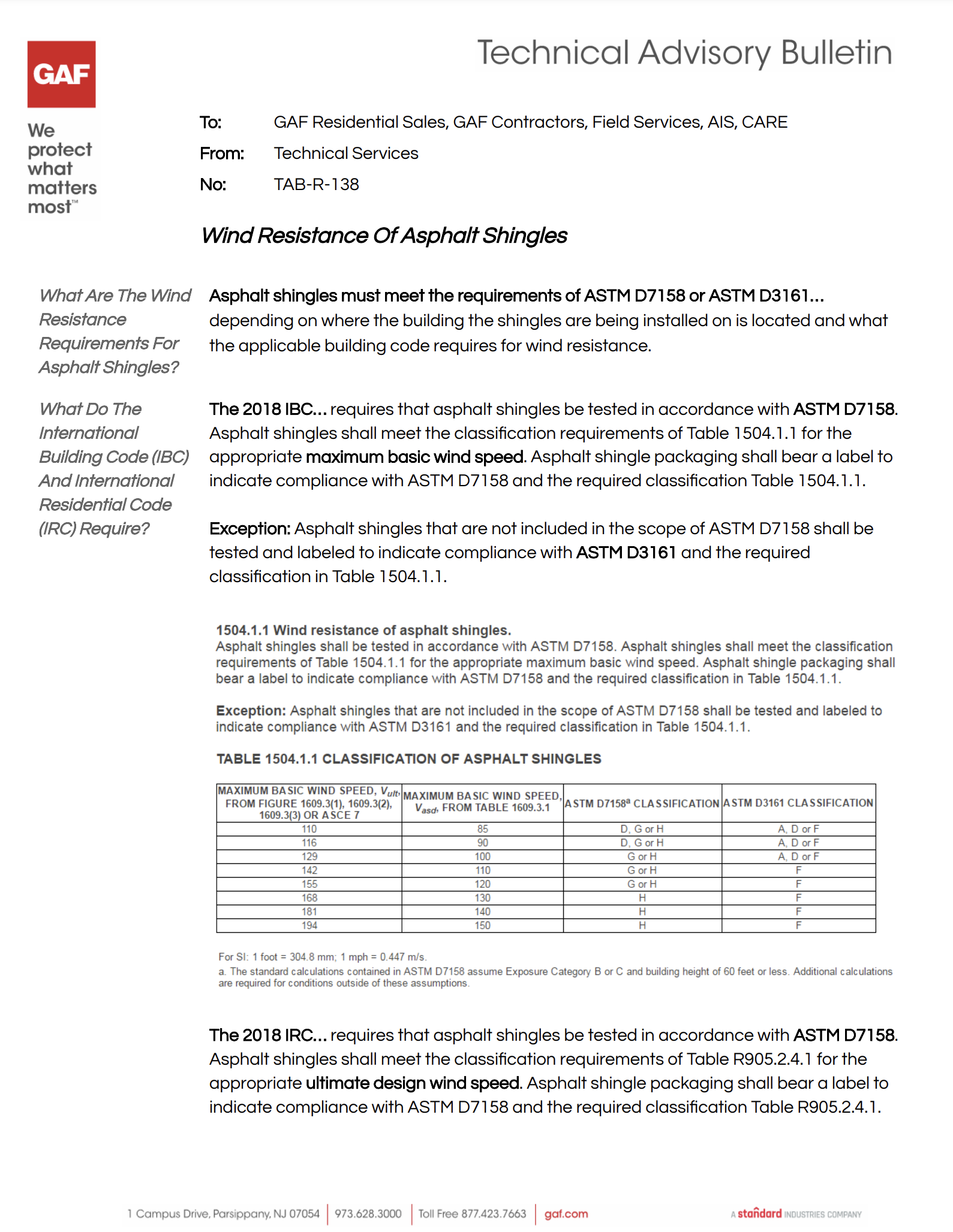How Asphalt Shingles Meet Wind Resistance Standards for Safer, Longer-lasting Roofing
In regions like Illinois, where weather can shift from serene to stormy, ensuring the durability and safety of roofing materials is crucial. Asphalt shingles are a popular choice due to their cost-effectiveness and protective capabilities. This post explores how these shingles stand up to the demanding wind resistance standards set by building codes and industry practices, particularly in storm-prone areas.
Asphalt Shingles and Wind Resistance
Asphalt shingles are engineered to resist high winds and mitigate water ingress. The R-138 document details technical specifications and testing methodologies that ascertain how well these shingles perform under extreme conditions. Key factors include:
- Design and Material Composition: Modern asphalt shingles are made with a fiberglass mat base coated in mineral granules, providing strength and flexibility necessary for wind resistance. Their design includes self-sealing strips of adhesive that bond shingles together, reducing the risk of uplift in high winds.
- Testing and Standards Compliance: According to the International Residential Code (IRC) and the American Society for Testing and Materials (ASTM D7158), asphalt shingles must undergo rigorous testing to be certified for specific wind speed ratings. These tests simulate long-term exposure to high winds to ensure shingles can protect homes effectively.
- Installation Techniques: Proper installation is vital for maximizing the wind resistance of asphalt shingles. This includes correct nail placement and spacing, as per manufacturer guidelines and the National Roofing Contractors Association’s recommendations. Ensuring adequate attic ventilation also plays a role in preventing wind uplift.
- Regional Considerations and Building Codes: In Illinois, building codes may require specific standards depending on local wind speed data and historical weather patterns. For example, areas along the Lake Michigan shoreline might have different requirements than more inland locations due to differing exposure to wind-related weather phenomena.
Benefits of Wind-Resistant Shingles
Choosing asphalt shingles that meet high wind resistance standards offers several benefits:
- Enhanced Durability and Longevity: These shingles are less likely to require repairs or replacement due to wind damage.
- Improved Safety: Reduces the risk of shingles blowing off, which can cause injury or additional property damage.
- Insurance Advantages: Some insurers offer reduced premiums for homes with wind-resistant roofing, recognizing the decreased risk of damage.
For homeowners in Illinois, investing in asphalt shingles that meet or exceed industry standards for wind resistance is a prudent decision. These shingles not only offer robust protection against the elements but also contribute to the overall structural integrity of the home.
For immediate service or consultation, you may contact us at Allied Emergency Services, INC.
Contact Information:
Phone: 1-800-792-0212
Email: Info@AlliedEmergencyServices.com
Location: Serving Illinois, Wisconsin, and Indiana with a focus on the greater Chicago area.
If you require immediate assistance or have specific questions, our human support is readily available to help you.
Disclaimer: This article is intended for informational purposes only. For professional advice, consult experts in the field.










